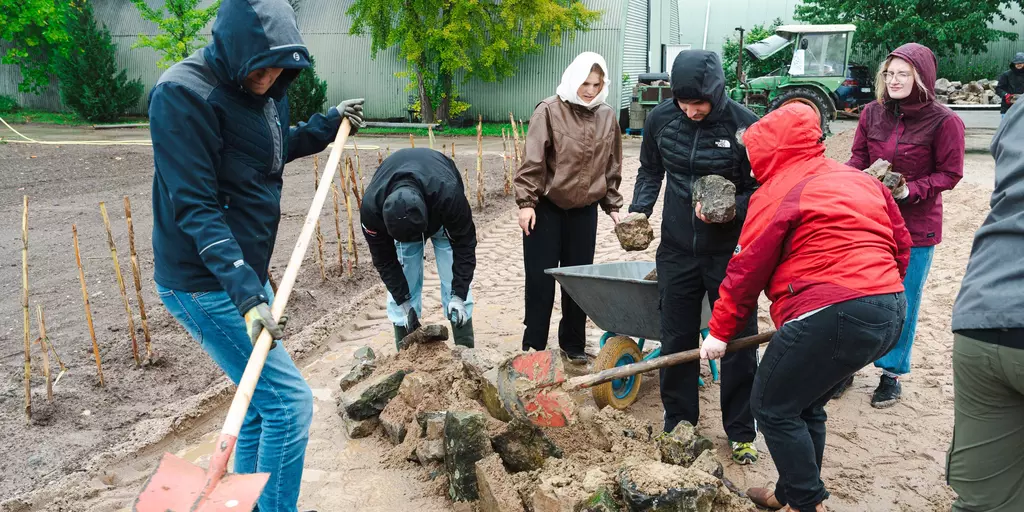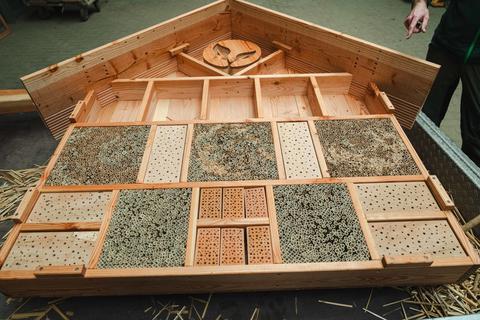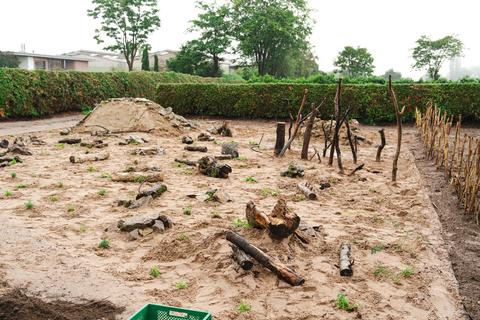Azubi-Aktionstag für mehr Nachhaltigkeit
2025-10-17
Azubis aktiv für die Zukunft: 2. Tag der Nachhaltigkeit
Zum zweiten Mal fand für das Azubi-Team im Headquarter der Schwabe-Gruppe der Aktionstag zum Thema Nachhaltigkeit in der
Den Vormittag über gaben verschiedene Vorträge neue Impulse zu unserer Nachhaltigkeits-Roadmap sowie spannende Informationen zu unserer regionalen Insektenvielfalt, die in der Terra Medica besonders groß ist. Am Nachmittag ging es – trotz Regenwetter – raus aufs Feld: Mit Gummistiefeln und Regenjacken hat unser eifriges Azubi-Team zwei neue Projekte umgesetzt: Ein selbst bestücktes Bienenhotel und ein Sandarium für Wildbienen bieten ab sofort dringend benötigte Nistplätze direkt zwischen Kamille, Lavendel & Co.
Impressionen des Tages gibt es auch auf

Insektenhotel Zimmer frei!
Das Insektenhotel ist mit 1,80 mal 1,50 Metern eine kaum zu übersehende „Wohneinheit“. Bambus- und Schilfröhrchen, die die Azubis in Handarbeit in die Holzstruktur gesteckt haben, bieten Nistmöglichkeiten für Insekten mit unterschiedlichen Bedürfnissen.
Primär werden dort Wildbienen einziehen. Aber auch Ohrenwürmer und Schlupfwespen nutzen das Insektenhotel, um darin zu überwintern. Im Januar wird eine Gruppe Freiwilliger nochmals Hand anlegen, um es für den Frühling einsatzbereit zu machen.

Zuhause im Sandarium
Das Sandarium ist ein spezielles Sandbeet, das bodennistenden Wildbienen Nistmöglichkeiten bietet. Die Azubis und Dualis haben dafür trotz intensiven Nieselregens einige Stunden lang geschaufelt und Pflanzen gesetzt. Um weiteren Tierarten Unterschlupf zu gewähren, haben wir für eine Trockenmauer und eine Lößwand Steine geschichtet und für einen Totholz-Wald alte Baumstämme aufgestellt. Die gesetzten Pflanzen dienen kleineren Bienen mit eingeschränktem Flugradius als Nahrungsquelle. Mit Arten wie Thymian, Braunelle, Wiesenflockenblume, Hauhechel oder Johanniskraut haben die Azubis heimische und trockenheitsresistente Pflanzen gesetzt.